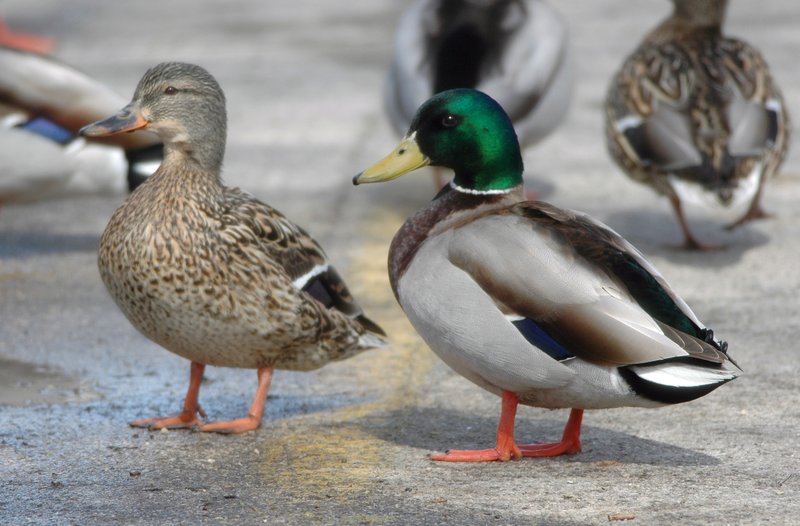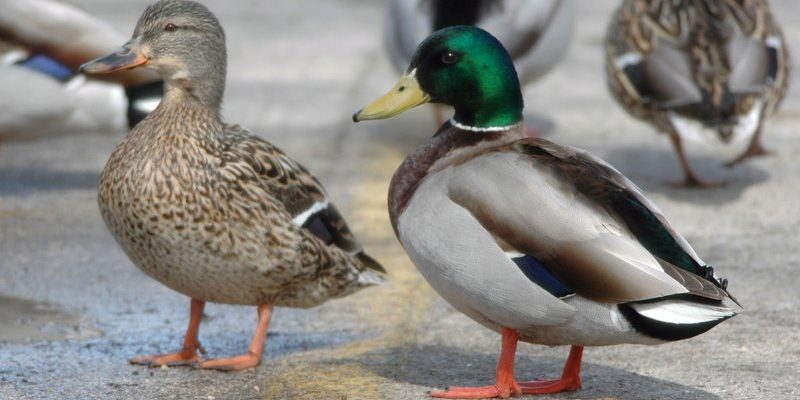
In this article, we’ll dive deep into the diet of mallards, exploring their favorite foods, how they forage, and some interesting behaviors linked to their eating habits. Stick around, and by the end, you’ll have a better understanding of these charming birds and their culinary adventures—almost like sitting down with a friend over coffee and sharing fun facts.
What Do Mallards Eat?
Mallards are omnivores, which means they enjoy a mixed diet. They don’t just stick to one category of food, making them pretty adaptable and clever foragers. Here’s a breakdown of their preferred snacks:
- Plant Matter: Mallards love to munch on a variety of aquatic plants. They often feed on water lilies, duckweed, and pondweed. These plants are not just tasty but also provide essential energy.
- Seeds and Grains: You’ll often find mallards foraging for grains like corn, rice, or wheat. They can spot these goodies from far away, especially in agricultural areas where fields meet water.
- Insects and Larvae: Protein is crucial, too! Mallards commonly feast on insects, snails, and even small fish. They look for small invertebrates lurking in the mud, which can easily be missed if you’re not paying attention.
So, you might be wondering how mallards choose their meals. Their diet changes with the seasons and availability of food. During spring and summer, you’ll often see them snacking on more insects and soft plants, while in fall and winter, they lean towards seeds and grains to fuel their migration.
How Do Mallards Hunt for Food?
You might think that hunting for food is complicated, but for mallards, it’s all about using their natural skills. When searching for meals, these ducks employ various techniques that showcase their adaptability.
Firstly, mallards are known for dabbling, which is a fancy term for how they feed in water. They dip their heads underwater while floating, allowing them to reach submerged plants. While doing this, they can also filter out small organisms using their unique beaks, which are adapted specifically for this purpose. Imagine them like little vacuum cleaners, sifting through water with finesse.
Another method they use is walking along the shore or in shallow water, where they can peck at grains or insects hiding in the mud. This foraging style allows them to explore different habitats, showing how versatile they are. Plus, who doesn’t love a good walk while hunting for dinner?
The Role of Seasonal Changes
Seasonal changes can greatly affect what mallards eat and how they forage. When temperatures drop and food becomes scarce, these ducks have to be resourceful. They may travel longer distances to find food or adapt their diet based on what’s available. As winter rolls in, they might hunt for grains in farmers’ fields or rely on aquatic plants that can withstand the cold.
Interestingly, during migration season, mallards often change their eating habits to prepare for long flights. This means they might stock up on energy-rich foods, like seeds, to fuel their journey. Imagine them as tiny athletes, training hard before a big race!
Social Foraging: Mallards and Their Friends
Mallards are social creatures, and being around other ducks can benefit their foraging. They’re often seen foraging in groups, which can help them find food more efficiently. There’s safety in numbers, right? When they spot a potential food source, more eyes mean a quicker reaction to avoid predators.
Sometimes, mallards will even follow other waterfowl, like geese or swans, to areas where food is abundant. It’s a clever strategy, showing that they’re not just smart solo hunters but also team players in the great quest for a meal.
Feeding Behaviors and Techniques
The techniques mallards use to feed are pretty fascinating. As mentioned earlier, dabbling is a significant method, but there are other feeding behaviors worth noting. For instance, mallards are excellent at diving. While they typically dabble, they may occasionally dive deeper to reach food that’s out of reach.
You might also observe them tip-up feeding. This is when they stick their tails in the air and their heads underwater. It’s an amusing sight, and it shows how dedicated they are to finding food. They’ll go all out to get those tasty plant roots or hidden insects.
Another technique is the surface feeding, where they skim the water’s surface to catch insects or seeds. This method requires great agility and speed, showcasing their adaptability to different environments.
How Diet Affects Mallard Health
What mallards eat directly influences their health and breeding success. A varied and nutritious diet helps them maintain proper body weight, which is crucial for flying long distances during migration. It also supports their reproductive health; healthy mallards have better chances of producing strong offspring.
Interestingly, if food isn’t readily available or they eat poorly, it can hinder their growth and development. This is especially important for young ducklings, who need quality food to thrive. Just like us, good nutrition can make all the difference in leading a healthy life.
Understanding what mallards eat and how they forage provides a glimpse into the everyday life of these beloved waterfowl. These ducks are not just charming to watch; they’re also incredibly resourceful foragers. From dabbling and diving to social feeding, each technique showcases their adaptability and cleverness.
Whether you see them in a park pond or while hiking near a wetland, next time you spot a mallard, remember the intricate dance of survival they engage in every day. Their varied diet, influenced by seasonal changes and social behavior, plays a crucial role in their overall health and well-being. So, keep your eyes peeled—you never know where the mallard will lead you on its next culinary adventure!

